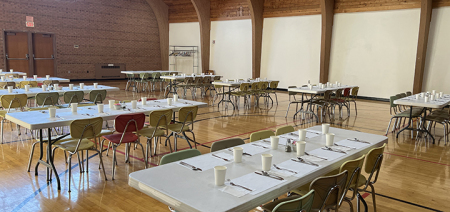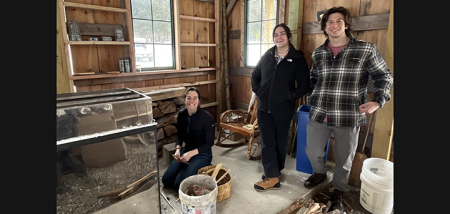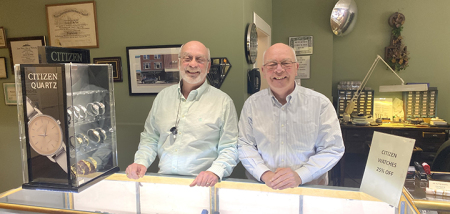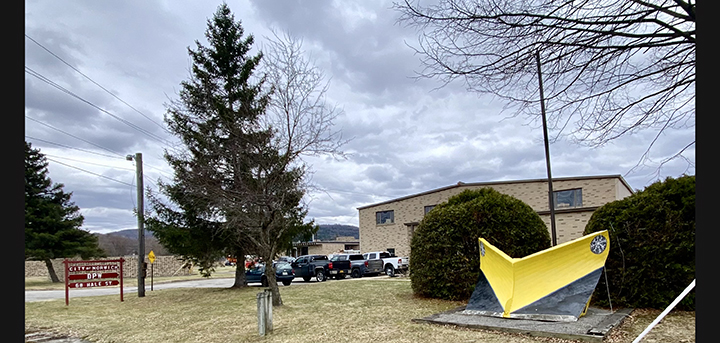Norman Rockwell Exhibit On View At Utica Museum Until September 18
Published:
August 15th, 2022
By:
Sarah Genter
 "New Kids in the Neighborhood," painted by Norman Rockwell in 1967. The Munson-Williams-Proctor Arts Institute in Utica is currently showing a special summer exhibit featuring over 50 oil paintings, drawings, photographs, archival magazines, and tear sheets and 323 magazine covers all created by Rockwell. (Submitted photo)
"New Kids in the Neighborhood," painted by Norman Rockwell in 1967. The Munson-Williams-Proctor Arts Institute in Utica is currently showing a special summer exhibit featuring over 50 oil paintings, drawings, photographs, archival magazines, and tear sheets and 323 magazine covers all created by Rockwell. (Submitted photo)
UTICA — In June, The Munson-Williams-Proctor Arts Institute (MWPAI) in Utica unveiled a summer exhibit featuring over 50 works and 323 magazine covers by famed 20th-century illustrator Norman Rockwell.
"Norman Rockwell really was America’s greatest illustrator of the 20th century, and he did primarily commercial artwork, but not exclusively. Really he chronicled the American spirit of the 20th century, looking at people, places, events, and really captured American history in a very personal way," said MWPAI Curator Steven Harrison.
The exhibit is on view until September 18, and includes full-scale oil paintings, photographs, drawings, archival magazines, and tear sheets on loan from the Stockbridge Museum. Harrison said the exhibition was created just for MWPAI, and gives visitors a once in a lifetime chance to view a completely unique collection of Rockwell's work.
"This was put together just for us, and so this particular exhibition won’t be shown anywhere else. And it’s a lot of things that aren’t normally on view at the Stockbridge Museum, so you can’t really see these things all the time there," he explained. "There’s a number of pieces that were unpublished. He painted them, but they were never published on any of the magazine covers. So there are a lot of things that people can see in this exhibition that they can’t normally see elsewhere."
Rockwell is well known for his optimistic and progressive works, which Harrison believes still resonates with individuals today due to the nostalgia and longing it evokes.
"His work was so full of optimism and hope throughout difficult times," said Harrison. "During the depression he wasn’t painting breadlines, he was painting very simple, intimate scenes between family members or between friends, the antics of children and the like. Things that were sort of everyday happiness, and he was really trying to present an idea of optimism in the world."
"I think his work was full of nostalgia, and people are always eager to think about the past, sometimes in an overly romantic way," he continued. "I think that today people are longing for that kind of approach to life, especially with the way our country is so divided politically and economically."
The exhibition also features a broad range of Rockwell's work, from his years before working at the Saturday Evening Post, through his 47 years with the magazine, and after his famous departure from the Post in 1963.
"They were restricting how he could portray black people in his art, and he could only paint them in servile roles, as a porter or a maid. So he left them in 1963 and really had a whole second career working for Look Magazine in particular, but for other magazines as well, in which he could express his progressive ideals. And this exhibition shows you the breadth and depth of his career," Harrison explained.
The Munson-Williams-Proctor Arts Institute is open to the public from 10 a.m. to 5 p.m. Tuesday through Saturday, and from noon to 5 p.m. on Sunday. Tickets to see the Norman Rockwell exhibit are $10 per person.
Harrison said throughout the year the museum is free to attend. However, due to the costs involved in putting together a special summer exhibit, they charge a small admissions fee.
Harrison encourages those interested to visit the museum and view the exhibition before it leaves in September.
"It’s sort of the last chance to see it, and it’s getting quite busy so people should not miss it. They should come on in and take a look if they want to see it," he said.
"Norman Rockwell really is an extraordinary artist and he had many dimensions to his work. A lot of people think only of his Saturday Evening Post covers and criticize him for not really being with the times, and perhaps too optimistic or hopeful," he added. "But really this show really explores his whole persona and the hope that he had so much more to offer, and he was an extraordinary painter as well. His technique is really beautiful, and unusual too."
The Munson-Williams-Proctor Arts Institute offers public tours, events, and other exhibits as well. More information on the museum can be found at MWPAI.org.
Author: Sarah Genter - More From This Author
Comments







